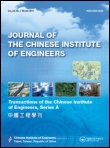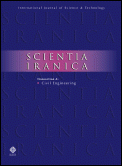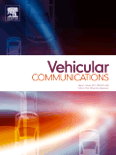
DEFENCE SCIENCE JOURNAL
metrics 2024
Connecting Ideas to Enhance Defence Strategies
Introduction
DEFENCE SCIENCE JOURNAL, published by the DEFENCE SCIENTIFIC INFORMATION DOCUMENTATION CENTRE, is a distinguished journal dedicated to advancing knowledge in the fields of defence science and technology. With a history that spans over five decades, the journal has been a pivotal platform for researchers and professionals to publish innovative findings and engage in interdisciplinary discussions across diverse categories including Biomedical Engineering, Chemical Engineering, Computer Science Applications, and Mechanical Engineering, among others. It is indexed in Scopus, reflecting its impact and relevance, including a ranking of #55 in Multidisciplinary studies, underscoring its broad-based influence within the academic community. Despite the lack of open access options, the journal remains a valuable resource for those seeking to stay informed on cutting-edge research and developments in defence science. With launching convergences from 1970 to 2024, it continues to evolve, aiming to foster the exchange of ideas that enhance national and global security, making it an essential read for students, researchers, and practitioners alike.
Metrics 2024
 0.26
0.26 0.80
0.80 0.80
0.80 40
40Metrics History
Rank 2024
Scopus
IF (Web Of Science)
JCI (Web Of Science)
Quartile History
Similar Journals

Applications in Engineering Science
Bridging Disciplines for Engineering ExcellenceApplications in Engineering Science is an innovative and highly-regarded open-access journal, published by ELSEVIER in the United Kingdom, focusing on the cross-disciplinary fields of Civil and Structural Engineering, Computational Mechanics, and Mechanical Engineering. Since its inception in 2020, the journal has rapidly established a solid reputation, landing in the Q2 quartile category across multiple engineering disciplines, reflecting its commitment to quality and relevance in the rapidly evolving engineering landscape. With Scopus rankings placing it prominently in the 66th percentile for Computational Mechanics and 58th for Mechanical Engineering, it serves as a vital platform for researchers, professionals, and students alike to share advanced methodologies, innovative applications, and interdisciplinary insights. The journal is committed to fostering open access to cutting-edge research, empowering readers worldwide to stay abreast of significant technological advancements and practical applications in engineering science.

JOURNAL OF THE CHINESE INSTITUTE OF ENGINEERS
Shaping the future of engineering with cutting-edge research.The Journal of the Chinese Institute of Engineers, published by Taylor & Francis Ltd, serves as a vital platform for the dissemination of innovative research in the field of engineering. Since its inception in 1978, this journal has been committed to advancing knowledge and fostering academic dialogue in general engineering and its multidisciplinary applications. With its current ranking of Q3 in the 2023 Engineering (miscellaneous) category, it is recognized within Scopus as the 139th out of 307 journals, placing it in the 54th percentile of its field. The journal facilitates access to a diverse range of high-quality articles, promoting a deeper understanding of contemporary engineering challenges. Although it does not operate on an open-access model, its insights are invaluable for researchers, professionals, and students eager to stay at the forefront of engineering advancements. Located in Oxford, England, the journal is poised to continue its influential role in shaping the future of engineering research until 2024 and beyond.

University Politehnica of Bucharest Scientific Bulletin Series B-Chemistry and Materials Science
Advancing Knowledge in Chemistry and Materials ScienceUniversity Politehnica of Bucharest Scientific Bulletin Series B-Chemistry and Materials Science is a renowned academic journal published by POLYTECHNIC UNIV BUCHAREST, situated in Romania. With the ISSN 1454-2331, this journal serves as a dynamic platform for the dissemination of innovative research findings in the fields of chemistry and materials science. Although classified in the Q4 quartile of both Chemistry (miscellaneous) and Materials Science (miscellaneous) categories for 2023, it has made a significant impact by providing a venue for emerging scholars and established researchers alike to share their work. The journal seeks to bridge theoretical insights and practical applications, promoting interdisciplinary dialogue and advancing scientific understanding. The scope encompasses a broad range of topics, reflecting contemporary advancements and challenges within the field. To facilitate access to its articles, while it does not currently operate under an open-access model, the journal remains committed to enhancing visibility through digital libraries. With a publication history spanning from 1999 to 2024, the journal is vital for all stakeholders—researchers, professionals, and students—seeking to stay abreast of developments in chemistry and materials science.

Scientia Iranica
Exploring the frontiers of science and engineering.Scientia Iranica is a multidisciplinary journal published by SHARIF UNIVERSITY OF TECHNOLOGY, serving as a vital platform for researchers and professionals in the fields of Chemistry, Civil and Structural Engineering, Computer Science, Engineering, Industrial and Manufacturing Engineering, Materials Science, Mechanical Engineering, and Physics and Astronomy. Established in 1999 and converging until 2024, the journal has swiftly ascended in the academic realm, achieving a commendable status with several Q3 classifications across a variety of disciplines and a Q2 in Engineering (miscellaneous) in its 2023 quartile rankings. With its notable Scopus Ranks reflecting a consistent percentile presence in several categories, Scientia Iranica emphasizes rigorous peer-reviewed research and cutting-edge findings, thereby contributing substantially to the advancement of knowledge in its areas of focus. Although not available as open access, the journal remains essential, offering critical insights and fostering collaboration among scholars in Iran and globally, thus enhancing the visibility and impact of innovative research outcomes.

Infocommunications Journal
Connecting Knowledge in Computer Science and EngineeringInfocommunications Journal, published by the SCIENTIFIC ASSOCIATION INFOCOMMUNICATIONS, stands as a vital resource within the fields of Computer Science and Electrical and Electronic Engineering. Since its inception in 2011, this journal has consistently contributed to the discourse surrounding innovations and research trends in these dynamic disciplines, culminating in a converged operational span through 2024. With an ISSN of 2061-2079 and an E-ISSN of 2061-2125, it is indexed in Scopus, showcasing impressive rankings within its categories, notably a Q3 classification in both Computer Science (miscellaneous) and Electrical and Electronic Engineering as of 2023. Although the journal operates under a non-open access model, its contributions are nonetheless essential for researchers and professionals seeking to advance their knowledge and practice. Situated in Budapest, Hungary, at Kossuth Lajos Square 6-8, 1055, the Infocommunications Journal is committed to fostering a rich scholarly exchange, making it an indispensable platform for those invested in the frontiers of technology and communication.

Journal of Polytechnic-Politeknik Dergisi
Bridging Theory and Practice for a Better Tomorrow.The Journal of Polytechnic-Politeknik Dergisi, published by GAZI UNIV, stands as a significant platform in the field of engineering and technology, addressing the needs of a diverse audience including researchers, professionals, and students. With an ISSN of 1302-0900 and an E-ISSN of 2147-9429, this journal is committed to disseminating high-quality research that fosters innovation and collaboration in polytechnic education and applied sciences. Located at CENTER CAMPUS TECHNOLOGY FAC B BLOCK EK BINA, 2ND FL, ANKARA 06500, Turkiye, it aims to serve as a vital resource for advancing knowledge and practical applications within the polytechnic community. The journal promotes open discourse on cutting-edge developments and helps bridge the gap between theory and practice. Engaged and comprehensive, it ensures accessibility to pivotal research findings through various academic channels.

Vehicular Communications
Bridging Theory and Practice in Automotive TechnologyVehicular Communications is a leading academic journal dedicated to the field of automotive engineering, communication, and electrical and electronic engineering, published by Elsevier. With an impressive impact factor and classification in the Q1 quartile for 2023 across three critical categories, this journal ranks among the top scholarly platforms, especially in automotive engineering and communication disciplines. With a focus on the latest innovations and technologies pertaining to vehicular communication systems, it provides a vital forum for the dissemination of high-quality research, bridging theoretical knowledge and practical applications. Researchers, professionals, and students are encouraged to contribute to this dynamic publication, which not only highlights cutting-edge advancements but also promotes interdisciplinary collaboration in the rapidly evolving landscape of connected and autonomous vehicles. As the field continues to grow, Vehicular Communications aims to facilitate knowledge exchange and inspire future research directions through its comprehensive and accessible content.

Journal of Advances in Information Technology
Pioneering Research for a Digital TomorrowJournal of Advances in Information Technology, published by ENGINEERING & TECHNOLOGY PUBLISHING, is an essential platform for researchers, professionals, and students invested in the dynamic fields of information technology, artificial intelligence, and computer science. With its ISNN of 1798-2340, this journal provides a rigorous peer-reviewed environment that supports the dissemination of innovative research findings, methodologies, and case studies. Since its inception in 2019, it has made notable strides, as reflected in its Q3 quartile rankings across various categories, including Artificial Intelligence and Software, and maintains respectable Scopus rankings, further solidifying its position as a key player in the academic community. Featuring a diverse range of topics within its scope, the journal encourages open access to knowledge while serving as a beacon for those seeking to expand their understanding of current trends and technologies shaping the future. Join us in advancing the field with impactful research that is both relevant and cutting-edge.

TEHNICKI GLASNIK-TECHNICAL JOURNAL
Empowering Research in Technical DisciplinesTEHNICKI GLASNIK-TECHNICAL JOURNAL is a peer-reviewed, open-access journal published by UNIV NORTH in Croatia, dedicated to fostering knowledge and innovation in the fields of engineering, computer science applications, and information systems. With an ISSN of 1846-6168 and an E-ISSN of 1848-5588, this journal has been a vital resource for researchers since its transition to open access in 2009, ensuring that valuable insights are freely available to the global academic community. Notably, it has achieved a commendable presence in various Scopus categories, including ranking in the 34th percentile for general engineering and engaging with emerging trends in areas like computer graphics and management information systems. As of 2023, it holds quartile rankings ranging from Q3 in engineering to Q4 in several computer science categories, underlining its diverse scope and relevance. The journal aims to provide a platform for rigorous research, innovative methodologies, and practical applications, making it essential reading for academics, practitioners, and students interested in advancing their understanding and practice in technical disciplines.

Frontiers in Mechanical Engineering-Switzerland
Exploring the Intersection of Engineering DisciplinesFrontiers in Mechanical Engineering-Switzerland, published by FRONTIERS MEDIA SA, is a pioneering open-access journal that has been fostering innovations in the field of mechanical engineering since its inception in 2015. Based in Switzerland, this journal provides a robust platform for disseminating cutting-edge research across multiple disciplines within mechanical engineering, including materials science, industrial and manufacturing engineering, and computer science applications. With impressive Scopus rankings, including Q2 statuses in key categories such as Industrial and Manufacturing Engineering and Mechanical Engineering, it stands out as a valuable resource for researchers and practitioners aiming to stay abreast of trends and breakthroughs in these fields. By embracing open-access principles, the journal ensures that high-quality research is readily available to a global audience, thereby promoting collaboration and knowledge sharing. As it continues to grow, Frontiers in Mechanical Engineering is poised to make significant contributions to both academic and professional communities, enhancing understanding and advancing practices in engineering disciplines.